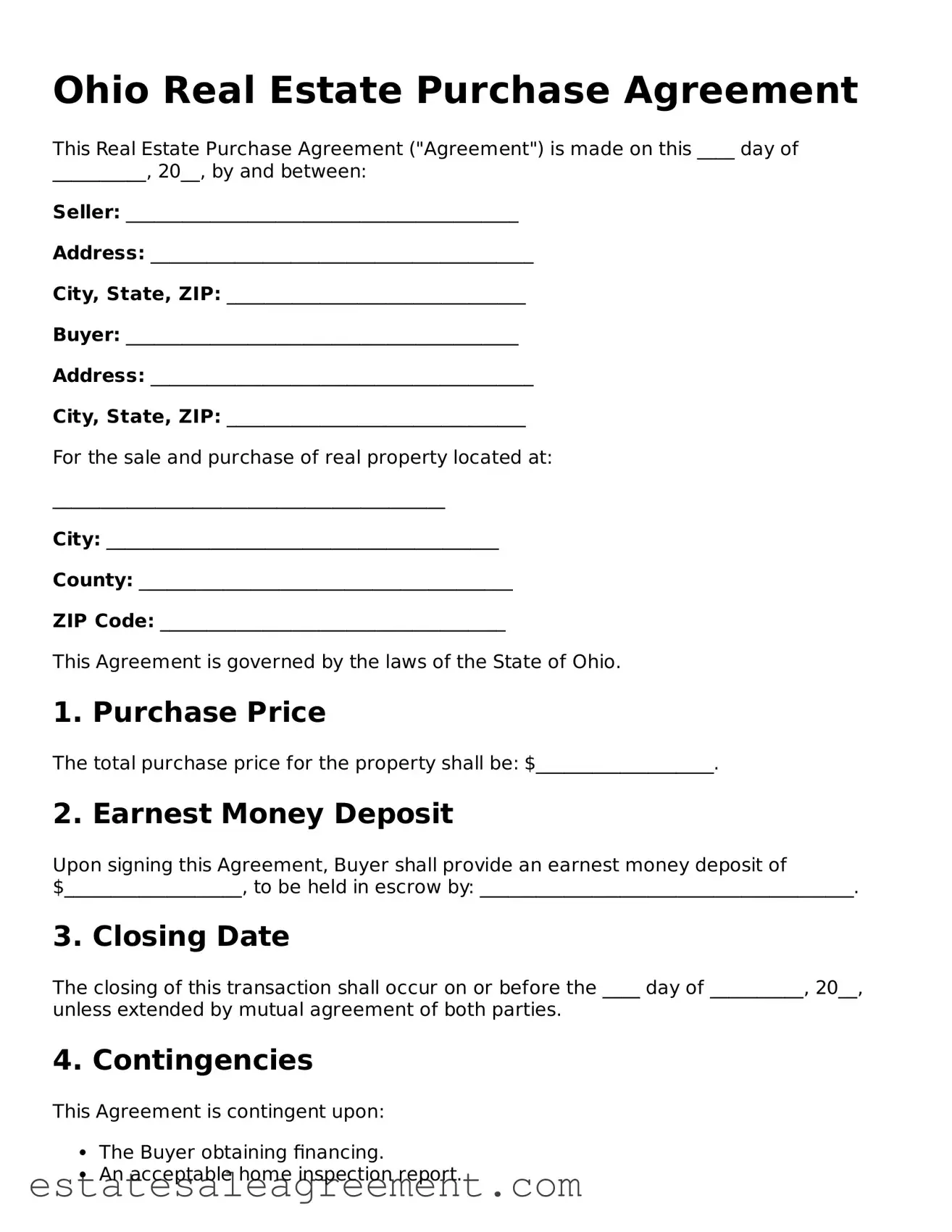Ohio Real Estate Purchase Agreement
This Real Estate Purchase Agreement ("Agreement") is made on this ____ day of __________, 20__, by and between:
Seller: __________________________________________
Address: _________________________________________
City, State, ZIP: ________________________________
Buyer: __________________________________________
Address: _________________________________________
City, State, ZIP: ________________________________
For the sale and purchase of real property located at:
__________________________________________
City: __________________________________________
County: ________________________________________
ZIP Code: _____________________________________
This Agreement is governed by the laws of the State of Ohio.
1. Purchase Price
The total purchase price for the property shall be: $___________________.
2. Earnest Money Deposit
Upon signing this Agreement, Buyer shall provide an earnest money deposit of $___________________, to be held in escrow by: ________________________________________.
3. Closing Date
The closing of this transaction shall occur on or before the ____ day of __________, 20__, unless extended by mutual agreement of both parties.
4. Contingencies
This Agreement is contingent upon:
- The Buyer obtaining financing.
- An acceptable home inspection report.
- A clear title to the property.
5. Property Condition
The property is sold "as-is," with no warranties expressed or implied by the Seller.
6. Signatures
By signing below, both parties agree to the terms and conditions outlined in this Agreement.
Seller Signature: ________________________________ Date: __________
Buyer Signature: ________________________________ Date: __________
This Agreement constitutes the entire understanding between the parties regarding the purchase and sale of the property described above and supersedes all prior negotiations or agreements.
